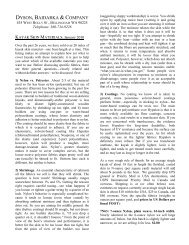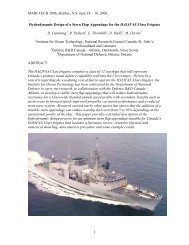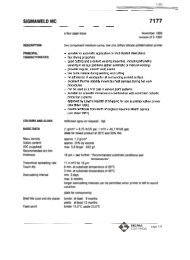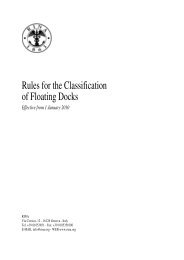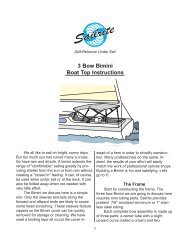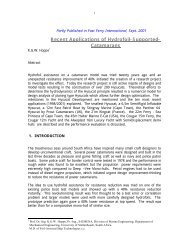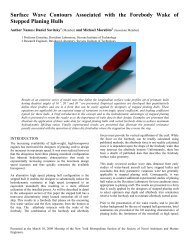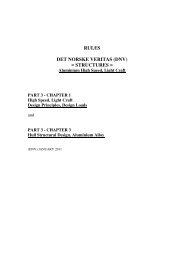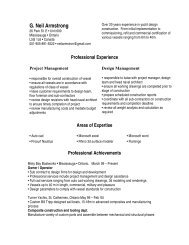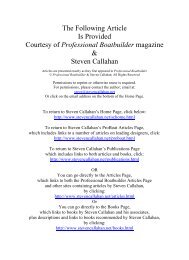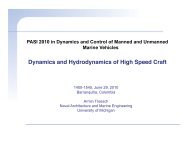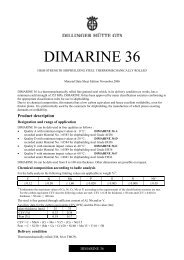SECTION 1 - Boat Design Net
SECTION 1 - Boat Design Net
SECTION 1 - Boat Design Net
Create successful ePaper yourself
Turn your PDF publications into a flip-book with our unique Google optimized e-Paper software.
Pt B, Ch 3, App 2APPENDIX 2TRIM AND STABILITY BOOKLET1 Trim and stability booklet1.1 Information to be included in the trimand stability booklet1.1.1 GeneralA trim and stability booklet is a stability manual, to beapproved by the Society, which is to contain sufficient informationto enable the Captain to operate the yacht in compliancewith the applicable requirements contained in theRules.The format of the stability booklet and the informationincluded vary depending on the yacht type and operation.1.1.2 List of informationThe following information is to be included in the trim andstability booklet:• a general description of the yacht, including:- the yacht’s name and the Society classificationnumber- the yacht type and service notation- the class notations- the yard, the hull number and the year of delivery- the moulded dimensions- the draught corresponding to the summer load line(defined in Ch 1, Sec 2, [3.7]- the displacement corresponding to the above-mentioneddraught• clear instructions on the use of the booklet• general arrangement and capacity plans indicating theassigned use of compartments and spaces (stores,accommodation, etc.)• a sketch indicating the position of the draught marksreferred to the yacht’s perpendiculars• hydrostatic curves or tables corresponding to the designtrim, and, if significant trim angles are foreseen duringthe normal operation of the yacht, curves or tables correspondingto such range of trim are to be introduced. Aclear reference relevant to the sea density, in t/m 3 , is tobe included as well as the draught measure (from keelor underkeel)• cross curves (or tables) of stability calculated on a freetrimming basis, for the ranges of displacement and trimanticipated in normal operating conditions, with indicationof the volumes which have been considered in thecomputation of these curves• tank sounding tables or curves showing capacities, centresof gravity, and free surface data for each tank• lightship data from the inclining experiment, as indicatedin Ch 3, Sec 1, [2], including lightship displacement,centre of gravity co-ordinates, place and date ofthe inclining experiment, as well as the Society approvaldetails specified in the inclining experiment report. It issuggested that a copy of the approved experiment reportbe includedWhere the above-mentioned information is derivedfrom a sister ship, the reference to this sister ship is to beclearly indicated, and a copy of the approved incliningexperiment report relevant to this sister ship is to beincluded• standard loading conditions as indicated in [1.2] andexamples for developing other acceptable loading conditionsusing the information contained in the booklet• intact stability results (total displacement and its centreof gravity co-ordinates, draughts at perpendiculars, GM,GM corrected for free surfaces effect, GZ values andcurve, criteria as indicated in Ch 3, Sec 2, reporting acomparison between the actual and the required values)are to be available for each of the above-mentionedoperating conditions. The method and assumptions tobe followed in the stability curve calculation are specifiedin [1.3]• damage stability results (total displacement and its maximumpermissible centre of gravity height, draughts atperpendiculars, GM, GM corrected for free surfaceseffect, GZ values and curve, criteria as indicated in Ch3, Sec 3, reporting a comparison between the actualand the required values) are to be available for each ofthe above-mentioned operating conditions. The methodand assumptions to be followed in the stability curvecalculation are specified in [1.3]• maximum KG or minimum GM curve or table whichcan be used to determine compliance with the applicableintact and damage stability criteria when applicable• information about openings (location, tightness, meansof closure), pipes or other progressive flooding sources.the opening used for the calculation of the down floodingangle has to be clearly identified• information concerning the use of any special crossfloodingfittings with descriptions of damage conditionswhich may require cross-flooding, when applicable• any other necessary guidance for the safe operation ofthe yacht, in particular, limitations regarding maximumallowable wind pressure as calculated in Ch 3, Sec 2,[3]• a table of contents and index for each booklet.July 2006 with February 2008 Amendments Bureau Veritas Rules for Yachts 97



